Aerophine 3418A Collector for Precious Metals Flotation
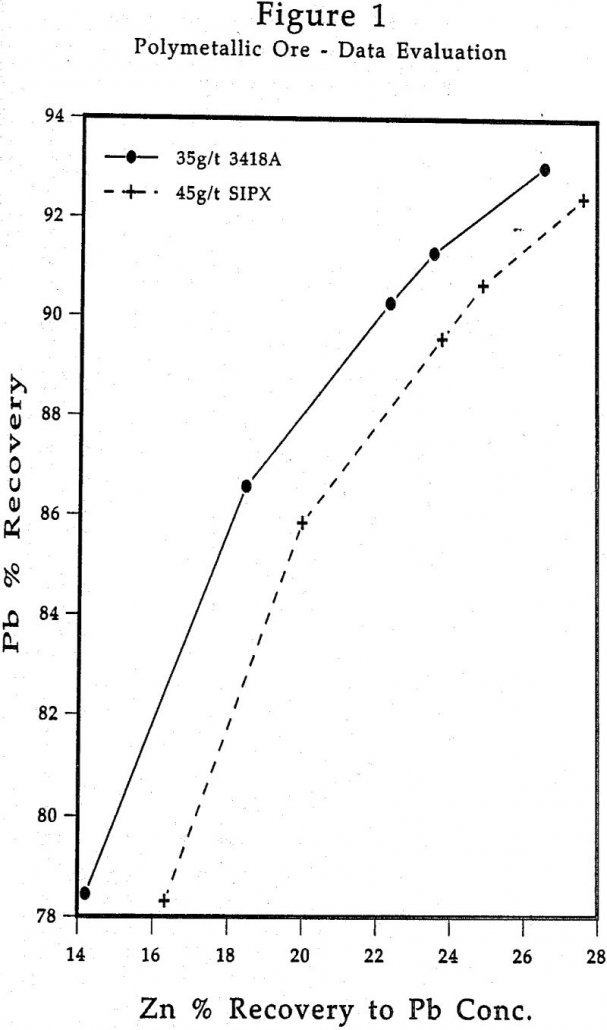
The origins of AEROPHINE 3418A promoter date back to the 1960’s, when it was established that sulfide mineral collectors based on phosphine chemistry demonstrated efficacy. This new collector chemistry was found to provide flotation performance differing significantly from those of more traditional thiol collector chemistries such as xanthates, dithiophosphates, mercaptobenzothiazoles, thionocarbamates and those with xanthogen […]
Platinum & Palladium Ore Flotation Pilot Plant
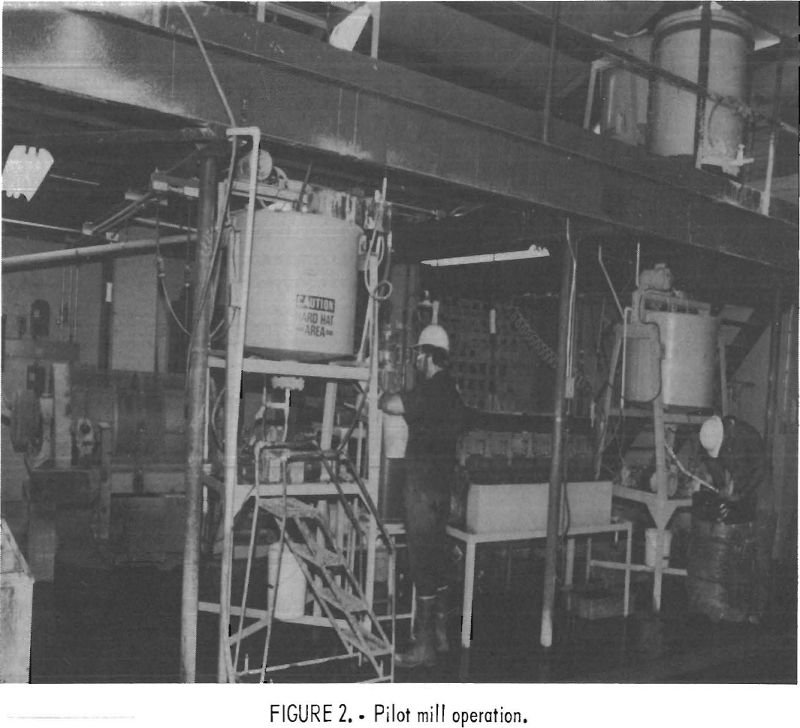
We have been conducting research on methods for beneficiating platinum-palladium ores from the Stillwater Complex, Montana. The Stillwater Complex contains the only known major deposits of platinum-palladium ores in the 48 contiguous States. Exploration by Johns-Manville Corp. (Manville Corp.) has resulted in the delineation of an approximately stratigraphic zone (J-M Reef) rich in platinum- and […]
Nitrogen Gas Molybdenum Flotation from Copper Concentrate
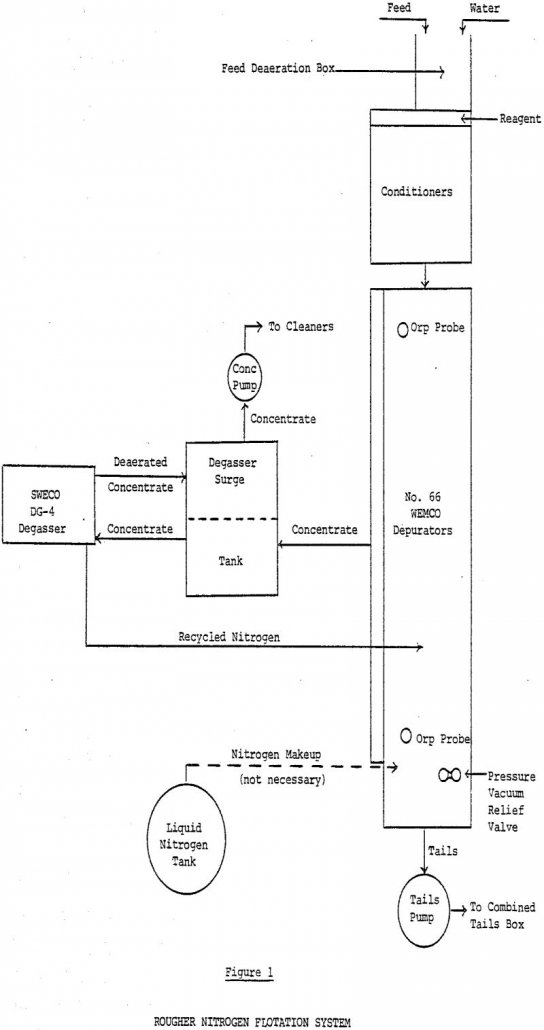
Mill feed averages 0.7% Cu, primarily as chalcopyrite, and 0.024% Mo. The copper concentrator produces 1050 mt/day of bulk Cu-Mo concentrate averaging 27% Cu and 0.6% Mo. Molybdenum plant feed is thickened to 62% solids and stored in two 150 cubic meter tanks. Two identical flotation circuits are fed from a constant head tank through […]
How to Recover Potash from Carnallite
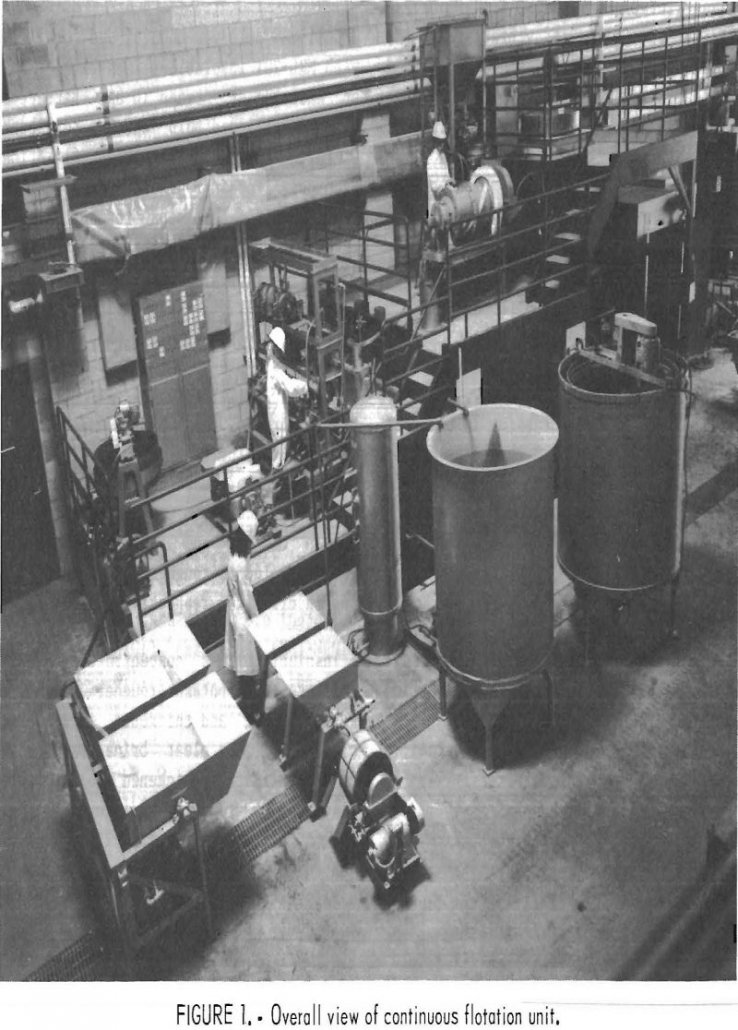
The Bureau of Mines conducted research on techniques for recovering potash values from high-insoluble-slimes-bearing domestic carnallite ores. In the first phase of the study, two techniques were devised: (1) a method where the insoluble slimes were depressed during potash flotation and (2) a method where insoluble slimes were removed by flotation prior to potash flotation. […]
How does Grinding Media Affect Galena Flotation
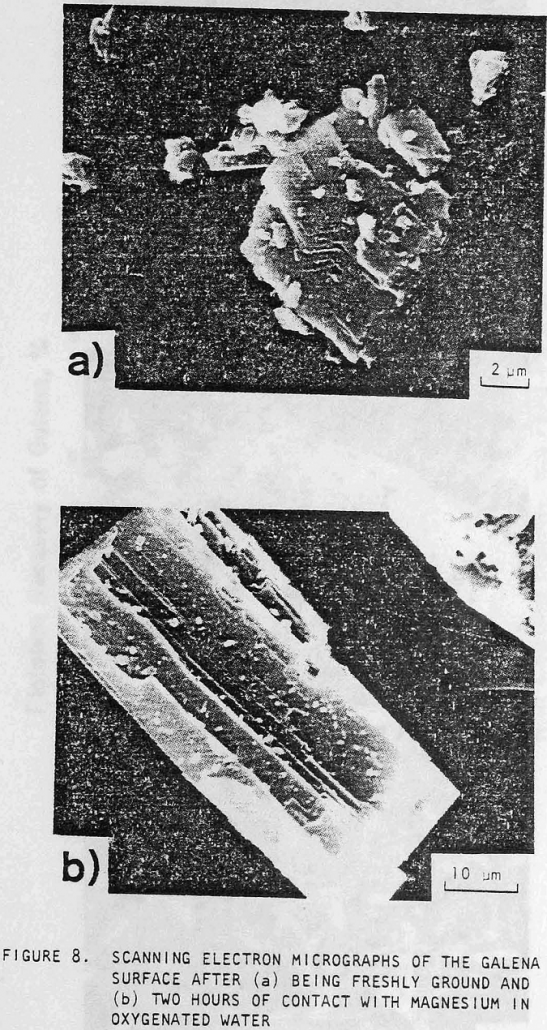
Sulfide ores are generally concentrated by grinding with steel media followed by flotation. Interactions between the grinding media and sulfide minerals adversely affect the floatability of the sulfides, increase the corrosive wear of the grinding media, and result in unrecovered sulfides in the flotation tailings leading to a loss of natural resources and the release […]
Oxidation Reduction Effects in Depression of Sulfide Minerals
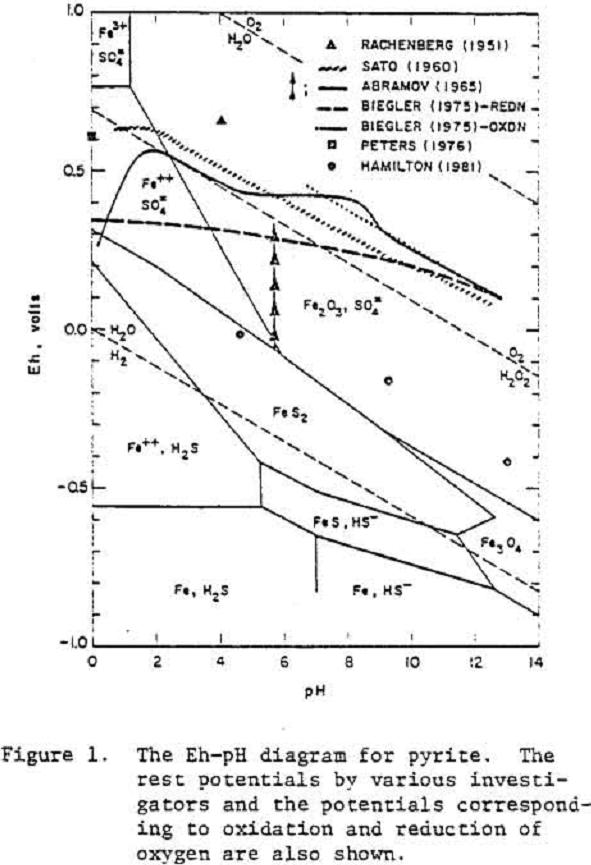
Although a variety of inorganic and some organic reagents are used as depressants in the flotation recovery of sulfide minerals, a complete understanding of the mechanism of depressant action is still lacking. The progress in the development of depressant mechanisms have been hampered by several factors which include: tendency of sulfide minerals to oxidize in […]
Kinetics of Coal Flotation
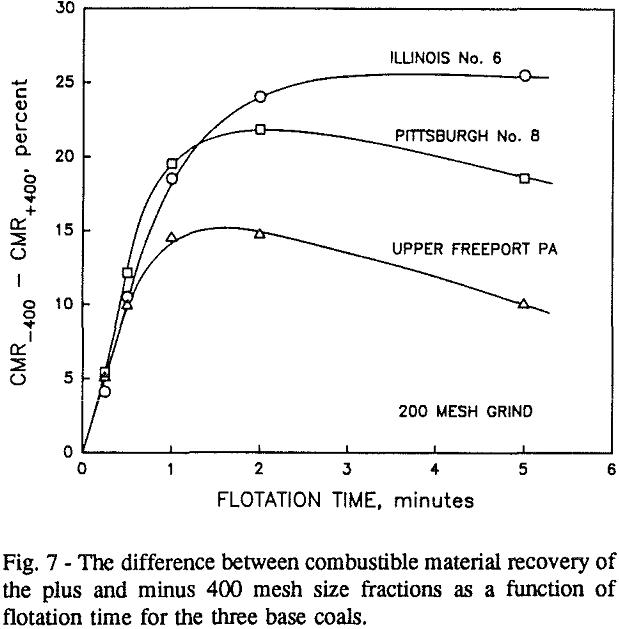
Desulfurization of coal before combustion is becoming important for the effective utilization of this major energy resource without polluting the environment. Because most sulfur-bearing and ash-forming minerals are finely disseminated in the coal matrix, raw coal must be ground to a fine size in order to liberate and remove them from coal to an acceptable […]
Integrated Heavy Media Cyclone & Flotation System
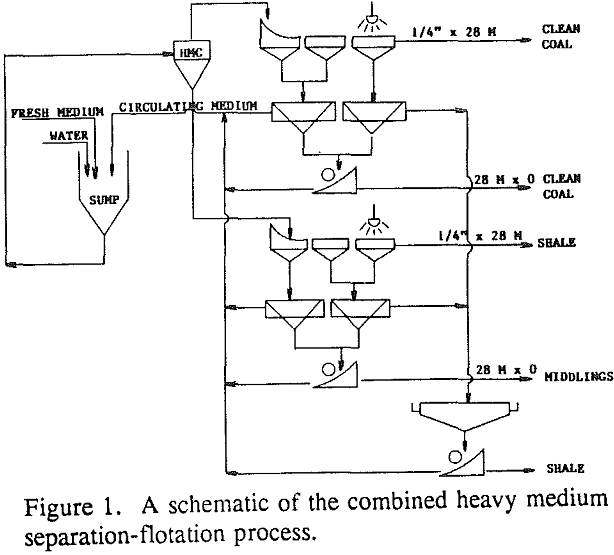
Heavy medium cyclones make use of a medium which is a homogenous mixture of water and dispersed magnetite. Density of the medium is regulated by adjusting the amount of magnetite in the mixture. Coal is mixed with the medium in a sump and fed to the HMC where the heavier ash material is separated from […]
Froth Viscosity & Flotation Efficiency Relationship
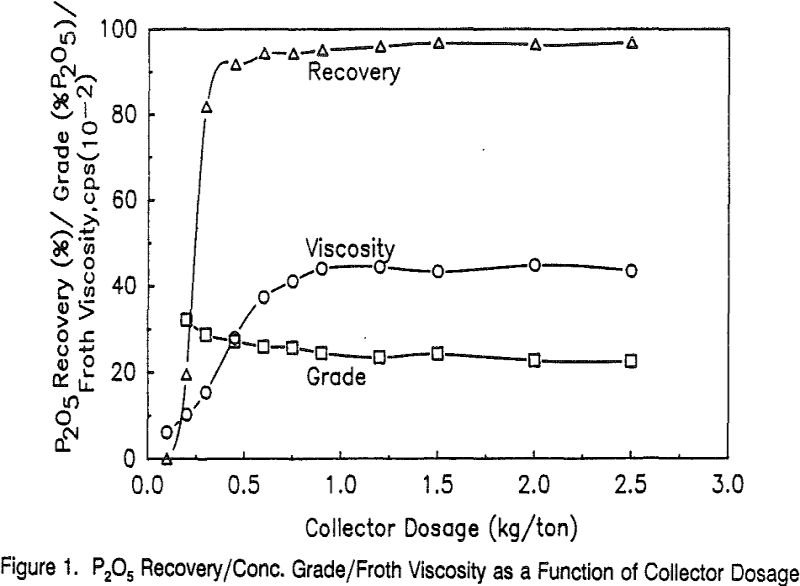
Flotation efficiency is governed by the wettability of the solid as well as the surface tension at the liquid/gas interface. Both these properties in turn determine the frothing characteristics encountered in a flotation process. A number of studies have focussed on the correlation between wettability as monitored by contact angle and flotation recovery. Frothing properties […]
Mini Pilot Plant in Mining & Mineral Processing
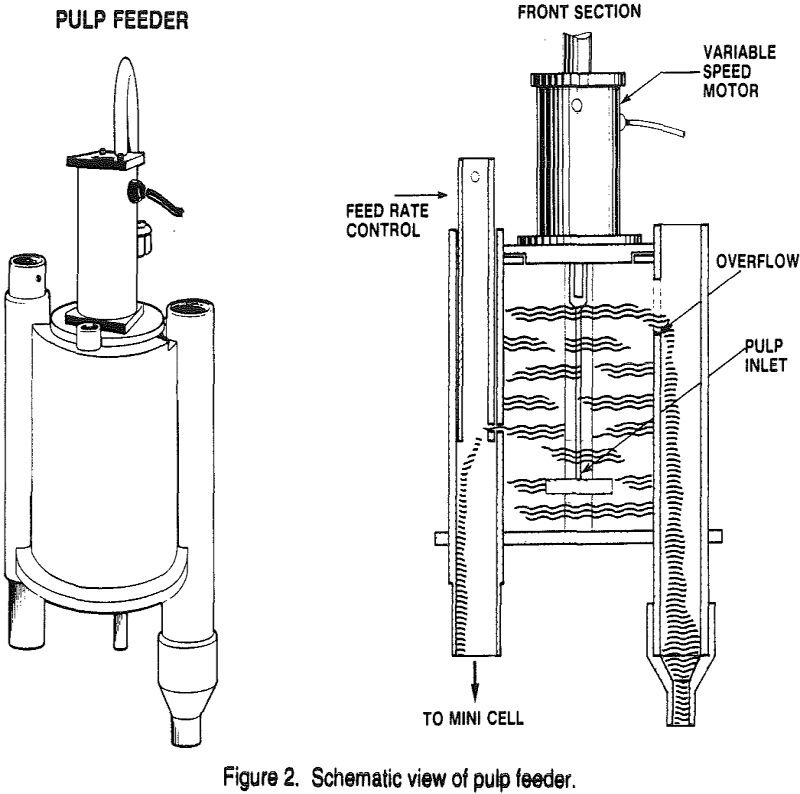
Study of the behaviour of an ore during concentration by flotation process starts, in general, with a series of tests in laboratory cells. Given the discontinuous nature of these tests, the information obtained by such a study is somewhat limited. It has long been recognized that laboratory test results are not always reproducible in pilot […]
